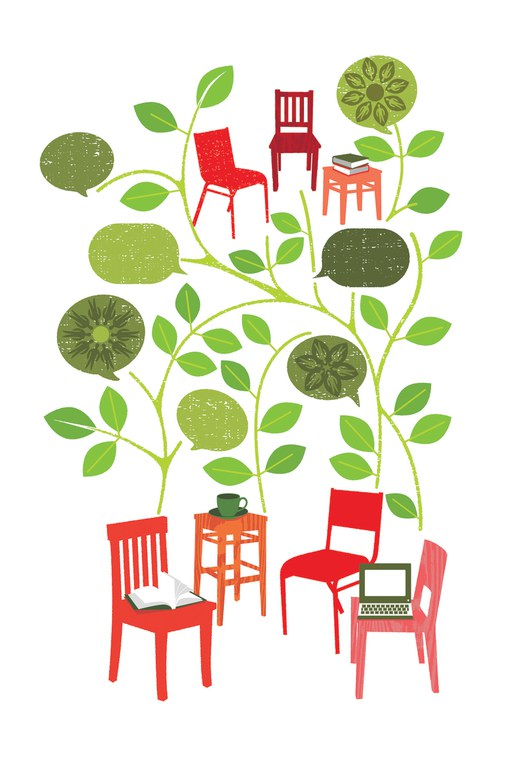Posted: April 19, 2021
With the nation in turmoil, students find a place to process and learn.
Maya Angelou said, "I do my best because I'm counting on you counting on me." Amidst a global pandemic and a national racial crisis, I realized her quote set the tone for the type of space I wanted to create for students in my Applied Youth Development (AYFCE 840) course--a course designed to carefully examine systems that support youth development. Critical issues central to this course had to be centered in a setting that required acknowledging the current national climate while also allowing students a space to find solace, be vulnerable, and be heard without judgment.
There is a lot of talk about creating safe spaces--places where we can express our individuality and our solidarities (while creating new ways of being together) on our terms without judgment or fear. My awareness of a new virtual environment set the tone for making time and space for my students to share and listen--a valuable connection that was missing from their daily lives in this virtual era of learning. I supported this concept of safe spaces by devoting classes with time for students to discuss, vent, and celebrate. Throughout the semester, students used this time to talk about current events, praise others' accomplishments, and provide a listening ear. The significance of these instances within the classroom was critical to the learning environment, and more important, to the culture we created as a group of individuals who were learning from one another within a new normal.
Rethinking the Meaning of Inclusivity
Toward the beginning of the semester, I was talking with a student about the upcoming course. As we discussed youth and community development theories, she asked if the approaches I would present in the class would be limited to those developed through a racially biased lens. At this moment, I realized if I was going to push students to question inclusivity and social justice, I had to make sure I was modeling this as an instructor. I began to question how I would drive diverse ideas and voices in my course content.
To that end, I was purposeful in incorporating diverse images, presenters, and readings to students. I wanted to challenge the norm of who created and held knowledge and to make sure my students interacted with these individuals, albeit through a virtual format. I found these inclusive points of realization started insightful conversations and led to greater reflective sharing. Group conversations and individual papers were contextualized through diverse points of knowledge and challenged notions of learning.
Digitizing Readings and Writings
Despite missing the connection and structure of a brick and mortar classroom, the virtual environment in which my students and I came together to share ideas and learn fostered a surprisingly high level of academic achievement. Although I had some trepidation moving into this teaching environment, I was comforted knowing that I had a set of valuable skills for use in online formats. I had the pedagogical practices at my fingertips and could create a desirable and supportive learning environment for my students.
One aspect I found useful to incorporate into my virtual class was online tools that allowed for deeper student reflection. While student learning was engaging, I felt it imperative to provide them with other spaces to engage with and reflect on course content outside of course time. Apps such as Persuall and reflection rooms on Canvas provided students with multiple opportunities to engage with the content. Using these tools facilitated individual interactivity and engagement, leading to deeper understanding while using pedagogical best practices.
Acknowledging the Unknown
2020 was an academic year like none other for many of us in higher education. As the COVID-19 pandemic unfolded, we had to pivot the way we approached learning and teaching in a matter of weeks. We found ourselves in a new normal--navigating online environments to create virtual classrooms that still enhanced students' learning. From the outset, I acknowledged that I would start the semester in a new learning setting and face unknown and unfamiliar challenges. Moving from in-person to virtual instruction required me to use new strategies around communication and organization. These strategies and the positive mindset that I chose to adopt helped me to embody the words spoken by Ms. Angelou--to be someone my students could count on.
By Nicole Webster
Nicole Webster is an associate professor of youth and international development in the Department of Agricultural Economics, Sociology, and Education.
Features
Fostering Forests
Across the United States, forests face unprecedented threats, and scientists in Penn State's College of Agricultural Sciences are conducting novel and complex research to conserve them.
Buzzing With Purpose
Community scientists work to protect Pennsylvania's wild bees
Conservation Reimagined
Exploring new approaches to cope with a changing climate



